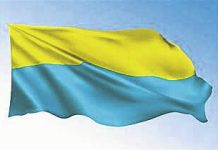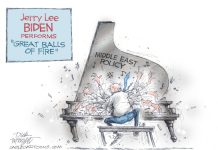Sandy Watts stopped by our house one night last week to drop off a present. There was an irony in the occasion. I was the one who should have been giving her a present.
In fact, there are lots of people in and around Columbus who owe her a gift. Sandy’s a teacher, a good one.
I’ve encountered a lot of people in my line of work who have attained success in their lives. Asked who influenced them the most, many pointed to a parent. Ranking right up there with a father or mother, however, was a teacher.
In explaining the influence of a teacher, these subjects didn’t dwell on what was taught. They focused instead on how a teacher lit a fire in their imaginations, opening the door to futures they might never have anticipated. I think that pretty well describes how Sandy and so many other teachers influence their students.
[sc:text-divider text-divider-title=”Story continues below gallery” ]
The gift she dropped off at our house was a thin, hardcover book titled “2015 Unexpected, Unforgettable ABC’s of Columbus, IN!” Its authors were the members of her third-grade class at Parkside Elementary School.
The subject matter was the city in which they lived, 26 individuals, organizations or establishments aligned in alphabetical order from Arvin Industries to Zaharakos Ice Cream Parlor. Each chapter carried with it the biography of the organization or individual. Each also was illustrated by a drawing of the subject matter. The artists were Sandy’s students, too.
The book started as a class project intended to make the students familiar with the community that was their home. She chose to base it on the 26 letters of the alphabet, assigning one to each student.
My role in the project was to provide a list of the subjects and give a talk before the class, providing a brief history on each. It was up to the students to develop more complete stories. That required referring to source materials and interviewing people with more detailed knowledge of the subjects.
Sandy took the completed essays and artwork, compiling and submitting them to a publisher she had worked with in the past. The result was the attractive books, which were presented to the students and their families.
The project stands as an example of “outside the classroom” thinking. The children’s school had been expanded into the community.
This isn’t the first time that Sandy looked elsewhere for ways in which her pupils can learn. She not only acquaints the youngsters with the world around them, she gets them involved with it.
One of the most notable endeavors taken on by her third-graders was her “Putting the ‘U’ in the USO” effort four years ago.
The class adopted the USO program, which was established at nearby Camp Atterbury when the base was a thriving center for training and processing soldiers during the wars in Afghanistan and Iraq. Through a variety of projects the students not only raised money that was donated to the organization but participated in activities intended to raise the morale of the soldiers.
In recognition of the impact their efforts had on the troops, Sandy and her students were awarded the 2011 Patriot Award at the Honoring Veterans dinner. In another troop support effort, the third-graders gathered hundreds of signatures that were written on a huge banner that was sent to members of the 4-19th Agribusiness Development Team stationed in Afghanistan.
Sandy isn’t the first teacher to reach outside the confines of her classroom to find ways for her students to learn. Given her example and that of others, I imagine that many future students will be using the community as their learning laboratory.
However, it will be up to other teachers to follow that lead. Sandy will be ending a 35-year career in teaching at the end of this school year.
I strongly suspect that her legacy will be written for years to come by the students she influenced.
Harry McCawley is the former associate editor of The Republic. He can be reached at [email protected].




